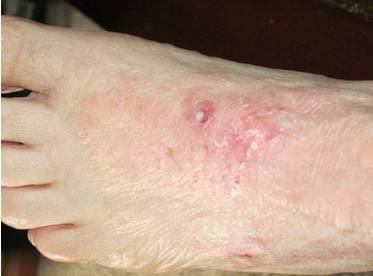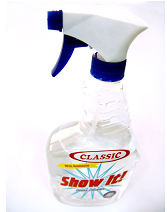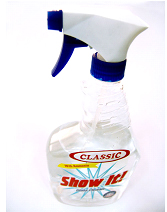In Part 1 of this two part series, itchy skin conditions are defined. In addition, two categories of triggers – allergens and irritants – are identified. Part 2 of this post suggests approaches to addressing skin conditions that cause itching and are otherwise generally unpleasant.
Introduction
Finding a safe, effective treatment for your child’s skin condition can be a daunting and expensive journey. Key to knowing which remedy is best suited for your child is to understand the underlying condition and its cause. Treating symptoms is a temporary solution until the root cause is addressed. The skin condition may reappear should the child’s body adapt to the treatment, rendering it ineffective.
Pure calcium bentonite clay is used by both adults and children to address chronic skin conditions as well as other ailments. The highest grades of calcium bentonite clay can be ingested to detoxify, aid digestion, treat allergies and much more. It is perfectly safe for both children and adults including pregnant and lactating women. Calcium bentonite clay is also the basis for poultices, masks and baths. Adults and children find great relief from itchy skin conditions such as eczema and psoriasis with regular clay baths. In addition, the food we eat and water we drink must be considered as part of a permanent solution to chronic skin conditions.
Sources of Skin Conditions
Dermatitis is a medical term and rash a more common term that both refer to inflammation of the skin. Both eczema and psoriasis fall into this definition and both are chronic skin conditions. The word psoriasis comes from the Greek word psora meaning to have the itch. Eczema comes from the Greek word eczema meaning to boil, ferment.
An Untreated Foot with Psoriasis

Psoriasis is more common in adults, while eczema is more common in children. Psoriasis often runs in families, but just because a family member has it doesn’t mean you will have it. Eczema is believed to be a response from an overactive response from the immune system and less in genetics. However, eczema is commonly found in families with a history of other allergies or asthma.
In his book Healing Psoriasis, Dr. John Pagano asserts that both psoriasis and eczema are toxemias, which are defined as toxic substances in the blood. According to Dr. Pagano, these conditions also result from excess acidity in the body. Where do these toxic substances come from? The majority of skin conditions (including psoriasis and eczema) are the result of either or both:
- allergens and irritants
- infections.
Allergens and Irritants
In today’s modern world, we are constantly bombarded by unnatural foreign substances in our daily living. Our bodies have not adapted to dealing with these man-made substances that are abundant in our surroundings – found in food, our water and our air. These toxins can be triggers that set off a reaction in the skin characterized by inflammation and itching. There are four ways to be exposed to allergens and irritants:
- Bites – for example from ticks, mosquitoes, spiders
- Direct contact – for example harsh fabrics or poison ivy
- Inhaling – for example breathing in paint fumes and polluted air
- Ingestion – for example peanuts, shell fish, soy
When it comes to children, there are a multitude of possible offenders to beware:
- sunscreen
- antibacterial soap
- moisturizer
- baby wipe
- laundry soap and conditioners including dryer sheets
- shampoo and conditioner
- household cleaners
- preservatives in soaps
- bug spray

In addition to man-made allergens and irritants, other triggers include stress, being too hot or being too cold. With some skin conditions, medications and the weather can also be triggers.
Infections
Another common cause of dermatitis is the result of infections. Fungal infections are caused by exposure to – you guessed it – a fungus. Examples include athlete’s foot, ringworm and yeast infections or candida. Most bacteria are harmless – and in fact some are beneficial such as Lactobacilli acidophilus. That said, bacterial infections can create havoc in the body and should be addressed. Examples include diaper rash, urinary tract infections and Streptococcus, the culprit in strep throat.
Up Next
In Part Two of this post, we discuss safe, effective solutions to these common skin conditions and their causes.
References
https://www.earthslivingclay.com/testimonials
https://children.webmd.com/environmental-exposure-head2toe/slideshow-skin-irritants
https://www.medicinenet.com/rash/page5.htm
https://www.webmd.com/skin-problems-and-treatments/guide/atopic-dermatitis-eczema
https://www.webmd.com/a-to-z-guides/bacterial-and-viral-infections
Healing Psoriasis, the Natural Alternative, John O. Pagano, D.C., Wiley Press, 2009
About Janet Lancaster
Janet owns and operates www.earthslivingclay.com, an informational and e-commerce site featuring calcium bentonite clay. Earth’s Living®’s mission is to bring the power of pure calcium bentonite clay to people who are seeking natural, alternative remedies that promote health and wellness for themselves and their pets. You can read more about the company here and Janet can be reached at janet@earthslivingclay.com.
Have you tried Clay Bentonite? Tell us how it helped you or what you think about clay in the comments below! Be sure to stay tuned for the next post!


Pingback: Skin Rashes